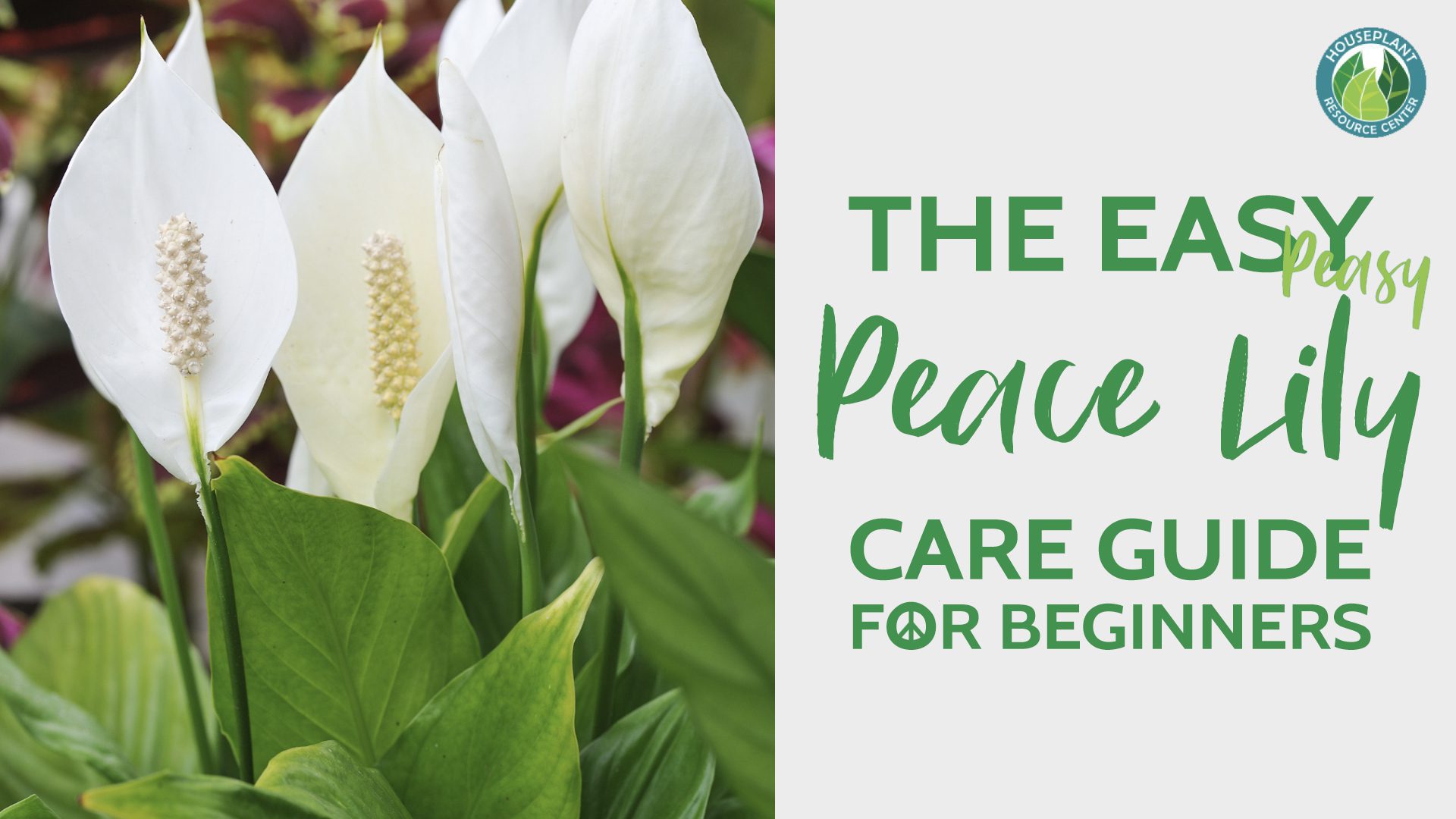The peace lily is a gorgeous and popular houseplant thanks to its beautiful white flowers, hardiness, and love of shade.
If you’re still fairly new to houseplants, this is a good one to try, especially if your home doesn’t get a ton of natural light. The peace lily isn’t quite as user-friendly as, say, a pothos or snake plant, but it’s still a forgiving plant that’s quite easy to care for.
They’re also on NASA’s Top Ten Household Air Cleaning Plants, so they can improve the air quality of your home as well as providing beauty!
Table of Contents
History of the Peace Lily
Variegated Peace Lily!
The peace lily, or Spathiphyllum, is found in the tropics of South America, which means it likes indirect light, moderate temperatures, and moist soil. Peace lilies actually aren’t true lilies at all, but belong to the Araceae family along with the snake lily and calla lily.
It’s a perennial plant, flowering for a few months in the spring and sometimes in the fall, but it’s lovely dark green leaves make it a beautiful addition to your home year-round.
The peace lily gets its name from European explorers who thought the white flowers looked like white flags or signs of peace and surrender. Peace lilies are thought to symbolize purity, rebirth, prosperity, and are often given as a sympathy gift when a loved one passes away.
How to Care for a Peace Lily: The Basics
Partial Sunlight
Peace lilies love shade, so it will do well in a room with a north or west-facing window, but don’t put it right by the window.
If the leaves turn yellow, give it a little more light. If they turn brown, move it farther from the window. It doesn’t get any easier than that, right?
Moderate water
One of the best parts about peace lilies is that they’re great at telling you when they want a drink! As a general rule, only water your peace lily when the leaves start to droop. The is usually about once a week, which should keep the soil nice and moist.
However, if you forget to water it, it will perk right back up with a good watering.
Temperature
Like most tropical plants, peace lilies like moderate temperatures between 65 and 85 degrees Fahrenheit, AKA room temperature. Simple! Take care to keep your peace lily away from cold windows and cooling or heating vents to keep it happy.
Soil
Peace lilies aren’t picky about soil, so any potting mix intended for houseplants should work. Make sure to use a pot with drainage holes and repot every two years or so.
Fertilizer
Give your peace lily a dose of 20-20-20 fertilizer just two or three times during the spring and fall when it grows. Be careful not to overfertilize your lily.
If you don’t want to remember that schedule, you can simply add a little Indoor Plant Food whenever you water. That’s what I do! I love this fertilizer because I have a ton of plants and I didn’t want to remember a fertilizing schedule for each one. So I simply add a little to my watering can each week when I make my rounds.
Cleaning
The leaves can get dusty, so it’s a good idea to occasionally wipe the leaves so the pores don’t get clogged. A gentle wipe down when you dust the rest of your house is all it takes. This will also keep pests away. Though peace lilies are generally resistant to bugs, it doesn’t hurt to add extra precautions!
Note: Peace lilies are poisonous to cats and dogs. They can irritate your pet’s mouth and stomach, but ingestion isn’t fatal. However, make sure to keep your peace lilies out of your pet’s reach or choose a different houseplant altogether.
Variegated Peace Lily
Watch as I unbox and share more about the Variegated Peace Lily!
The Peace Lily: A Perfect Plant for Beginners
That’s it! Simple, right?
If you want to clean the air in your home with a beautiful and low-maintenance flowering plant, look no further!




